Name Paula Modersohn-Becker Role Artist | Children Mathilde Modersohn | |
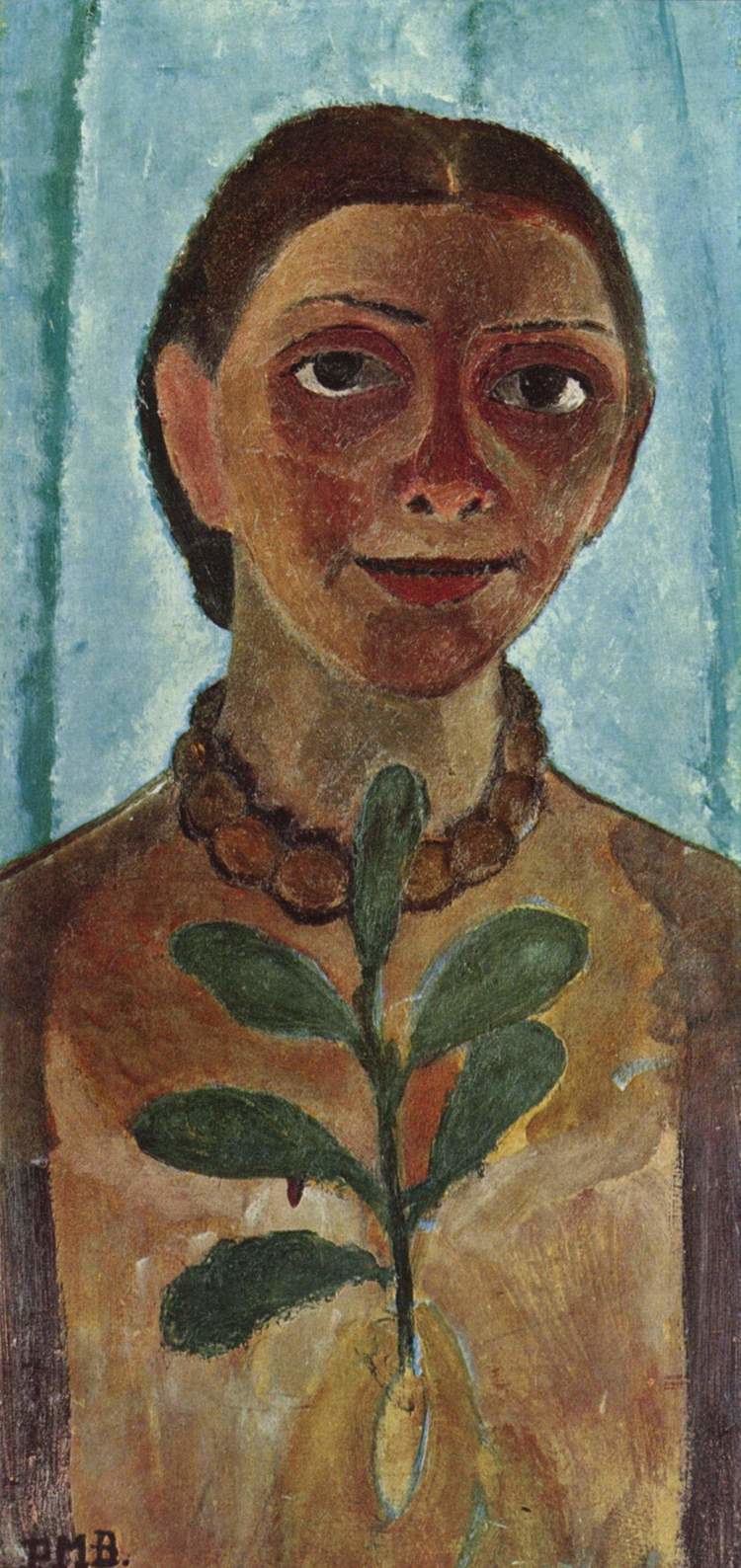 | ||
Artwork Self-Portrait with an Amber Necklace | ||
Arth 4117 20th century 1 paula modersohn becker
Paula Modersohn-Becker (February 8, 1876 – November 21, 1907) was a German painter and one of the most important representatives of early expressionism. In a brief career, cut short by postpartum embolism at the age of 31, she created a number of groundbreaking images of great intensity. She is becoming recognized as the first female painter to paint nude self-portraits. Using bold forays into subject matter and chromatic color choices, she and fellow-artists Picasso and Matisse introduced the world to modernism at the start of the twentieth century.
Contents
- Arth 4117 20th century 1 paula modersohn becker
- Paula modersohn becker paintings mozart quartet en ut majeur dissonnances k465
- Biography
- Artistic activity
- Trips to Paris
- Final year
- Painting technique
- Legacy
- Paula Becker House
- References
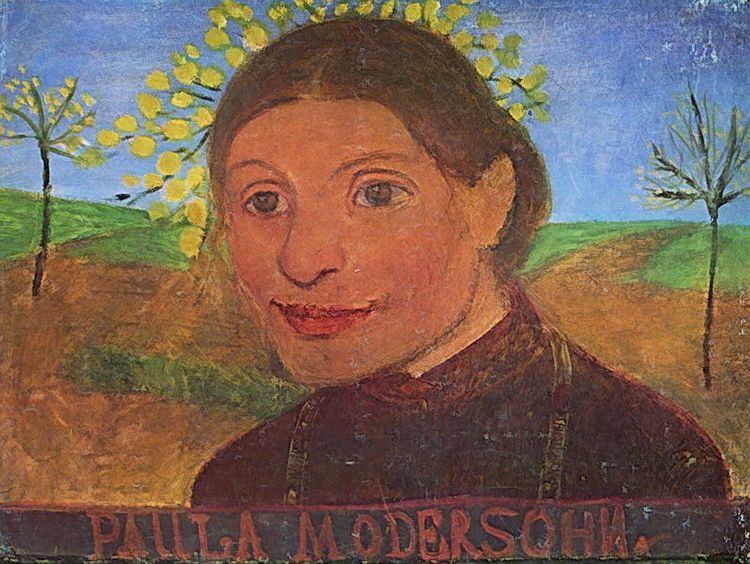
Paula modersohn becker paintings mozart quartet en ut majeur dissonnances k465
Biography
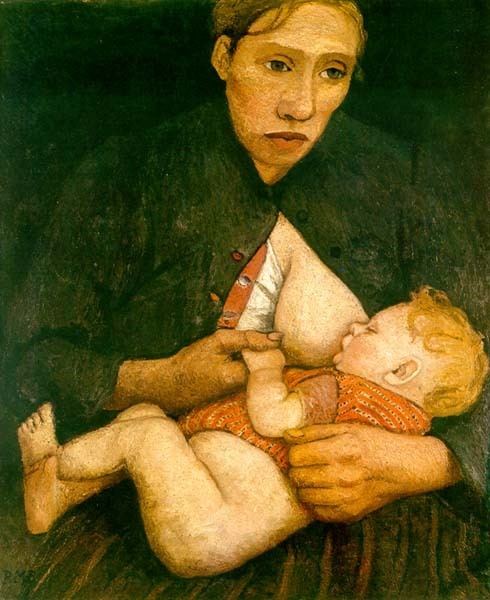
Paula Becker was born and grew up in Dresden-Friedrichstadt. She was the third child of seven children in her family. Her father Carl Woldemar Becker (January 31, 1841 Odessa – November 30, 1901, Bremen), the son of a Russian university professor for French lessons, was employed as an engineer with the German railway. Her mother, Mathilde (November 3, 1852 Lübeck – January 22, 1926 Bremen) was from an aristocratic family ″von Bültzingslöwen″, and her parents provided their children a cultured and intellectual household environment.

In 1888 the family moved from Dresden to Bremen. While visiting an maternal aunt in London, Becker received her first instruction in drawing at St John's Wood Art School. In 1893 she was introduced to works of the artists' circle of Worpswede; Otto Modersohn, Fritz Mackensen, Fritz Overbeck and Heinrich Vogeler presented their paintings in Bremen's Art Museum, Kunsthalle Bremen. In addition to her teacher's training in Bremen in 1893-1895, Becker received private instruction in painting. In 1896 she participated in a course for painting and drawing sponsored by the "Verein der Berliner Künstlerinnen" (Union of Berlin Female Artists) which offered art studies to women.
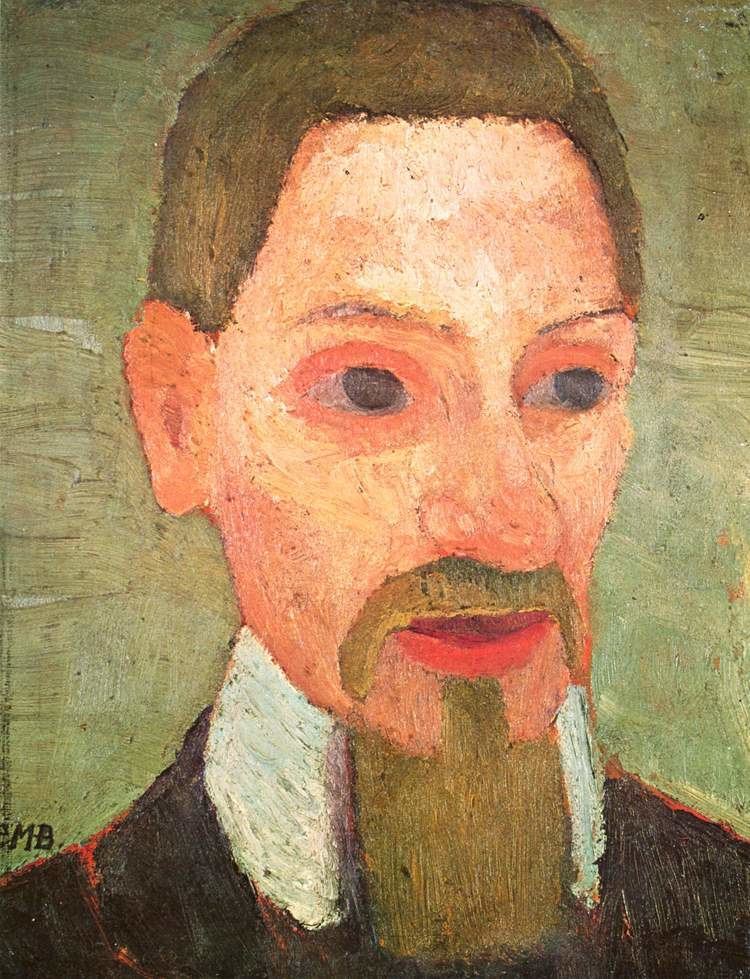
Becker's friend Clara Westhoff left Bremen in early 1899 to study in Paris. By December of that year, Becker followed her there, and in 1900 she studied at the Académie Colarossi in the Latin Quarter.
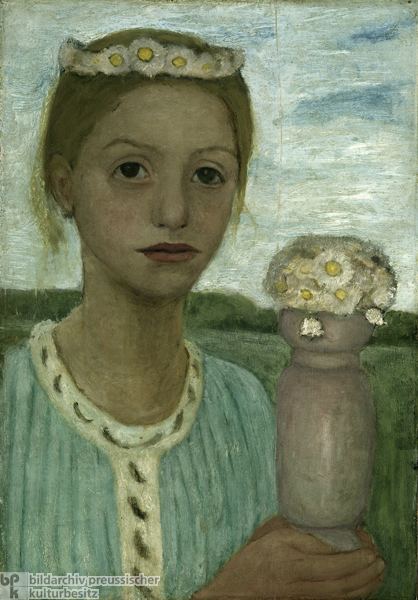
In April 1900 the great Centennial Exhibition was held in Paris. On this occasion Fritz Overbeck and his wife, along with Otto Modersohn, arrived in June. Modersohn's ailing wife Helen had been left in Worpswede and died during his trip to Paris. With this news Modersohn and the Overbecks rushed back to Germany.
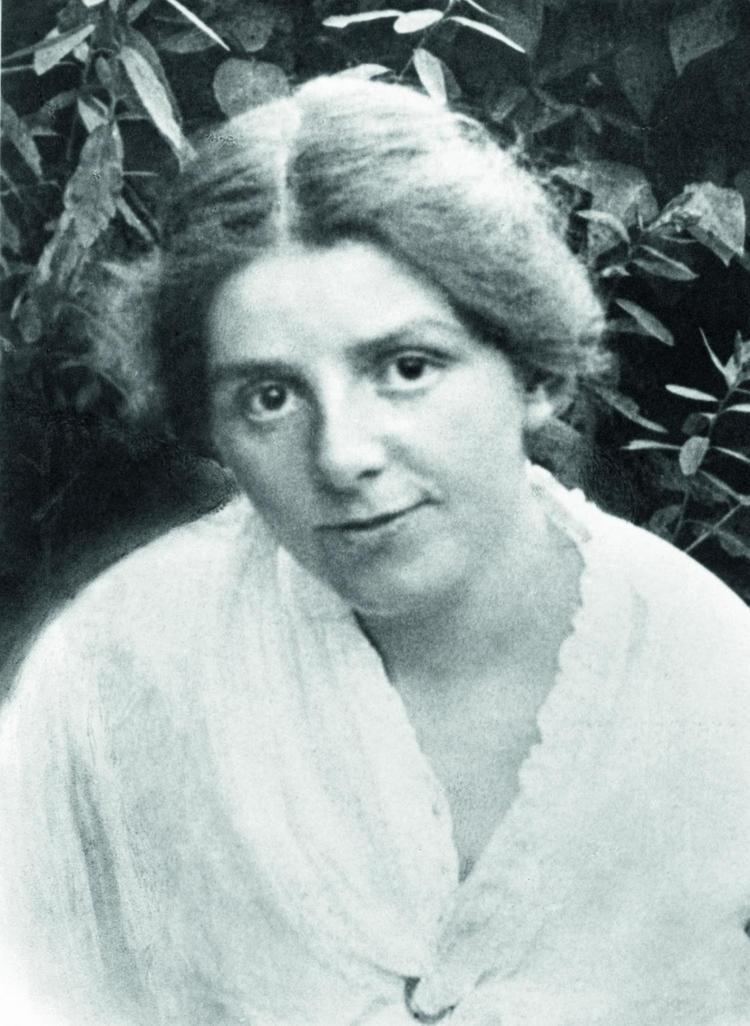
In 1901 Paula married Otto Modersohn and became stepmother to Otto's two-year-old daughter, Elsbeth Modersohn, the child from his first marriage. She functioned in that capacity for two years, then relocated to Paris again in 1903. She and Modersohn lived mostly apart from that time forward until 1907, when she returned to Germany full-time, apparently in hopes of conceiving her own child.
The marriage with Modersohn remained unconsummated until their final year together. By 1906, Becker (now known as Paula Modersohn-Becker) had reversed her previous desire to avoid having children, and began an affair with a well-known Parisian "ladies' man". However, by early 1907 she returned to her husband, became pregnant, and in November she delivered a daughter, Mathilde.
After the pregnancy she complained of severe leg pain, so the physician ordered bed rest. After 18 days he told her to get up and begin moving, but apparently an embolism had formed in a leg, and with her movement broke off and caused her death within hours.
Artistic activity
In 1898, at age 22, Becker immersed herself in the artistic community of Worpswede, where artists such as Fritz Mackensen (1866-1953) and Heinrich Vogeler (1872-1942) had retreated to protest against the domination of the art academy and life in the big city. She studied under Mackensen, painting from the nearby farmers, and the northern German landscape. At this time she began close friendships with the sculptor Clara Westhoff (1875-1954) and the poet Rainer Maria Rilke (1875-1926).
Until the years when Paula Becker began the practice, women painters had not widely used nude females as subjects for their work. Modersohn-Becker came from a bourgeois German family background. She was formally trained as an artist and school teacher and had studied in London and Paris. Her work on the female nude is unconventional and expresses an ambivalence to both her subject matter and the method of its representation.
Paula Becker was trained in the methods of realism and naturalism, along with a recognizable simplicity of form. She was able to achieve a distinct texture to her work by scratching into the wet paint. She later abandoned those techniques to move into Fauvism. She is becoming recognized as having influenced at least one of Picasso's paintings.
Trips to Paris
Until 1907 Paula Modersohn-Becker made another six extended trips to Paris for artistic purposes, sometimes living separately from her husband, Otto. During one of her stays in Paris she took courses at the École des Beaux-Arts. She visited contemporary exhibitions often, and was particularly intrigued with the work of Paul Cézanne. Other post impressionists were especially influential, including Vincent van Gogh and Paul Gauguin. Fauvism influences also appear in her works such as Poorhouse Woman with a Glass Bottle. The influence of French painter Jean-François Millet is noted in such pieces as her 1900 Peat Cutters.
During her last trip to Paris in 1906 she produced a series of paintings about which she felt very great excitement and satisfaction. During this period of painting, she produced her initial nude self-portraits, unprecedented for female artists, as well as portraits of her friends, including Rainer Maria Rilke and Werner Sombart. Art historians concur that this period was the strongest and most compelling time of her art production.
Final year
In 1907 Paula Modersohn-Becker returned to her husband in Worpswede, despite period correspondence that indicated her desire for independence. She wrote in detail about her love for her husband but also of her need to delay motherhood in her pursuit of artistic freedom. She continued to express ambivalence regarding motherhood as she was concerned about her ability to paint while raising a child; her diary entries indicate that she had planned on achieving a painting career by age thirty, then having children. So, when her daughter Mathilde (Tillie) Modersohn was born on November 2, 1907, Paula and Otto were joyous. The joy became tragedy nineteen days later, when Paula suddenly died. She had complained of pain in her legs after the delivery, and was advised to remain in bed. When the physician returned on 21 November, he advised her to rise. She walked a few steps, then sat down, called for the infant to be placed in her arms, complained of leg pain, and died, saying only "What a pity." She was buried in the Worpswede Cemetery where her grave is preserved.
Painting technique
Several paintings of Paula Modersohn-Becker had been investigated and the results show that she employed the same technique over her whole (short) career as a painter. Tempera was her medium of choice and she painted with a limited choice of pigments such as zinc white, cadmium yellow, viridian and artificial ultramarine.
Legacy
By 1899 Clara Westhoff had made a bust of her friend Paula Becker, saying that it was a symbol of their friendship and shared passion for art.
In 1908 Rainer Maria Rilke wrote the renowned poem "Requiem for a Friend" in memory of Paula Modersohn-Becker.
The art & architecture of the Paula Modersohn-Becker Museum was denounced by local Nazis in 1935 but Ludwig Roselius ignored this until Hitler denounced the Böttcherstrase in September 1936 and Roselius contemplated suicide but Barbara Götte intervened on his behalf with Hitler.
Mathilde Modersohn (1907-1998) founded the Paula Modersohn-Becker Foundation (Paula Modersohn-Becker-Stiftung) in 1978.
In 1988 a stamp with the portrait of Paula Modersohn-Becker was issued in the series Women in German history by the German post-office authority Deutsche Bundespost.
Paula Modersohn-Becker was not widely known at the time of her untimely death (age 31), and would have dropped into obscurity but for her voluminous writing. She maintained a diary, and corresponded regularly with friends in her artistic circle. Her letters were collected and widely published (in German) during the 1920s, and it was largely through them that her legacy was maintained. In the 1970s, US art historian Diane Radycki first translated them into English (they have also been translated by others since then). Two-thirds of the correspondence occurred from her sixteenth year to the early years of her marriage, and are full of youthful optimism and energy.
Paula Becker House
Modersohn-Becker's in Bremen, where she spent much of her life, opened in October 2007 as a private art museum and gallery. Her family moved from Dresden to Bremen in 1888 and lived in this house. Paula Becker lived here until 1899, when she was 23 years old, and set up her first studio in this house. There was an active artist community in Bremen and via Backer's mother's friendships in the art world, Paula grew to be part of the community. Apart from her teacher's training in Bremen in 1893-1895, Paula took private instruction in painting. It was not well known that the young Paula Becker had lived here for ten years; in 2003 Heinz and Betty Thies bought the then run-down house, and had it restored in time for the 100th anniversary of the artist's death. At that time (November 2007) it was turned into a public museum.
